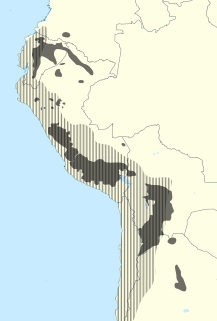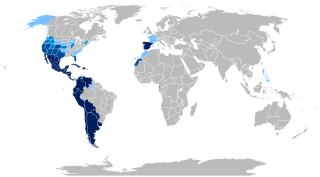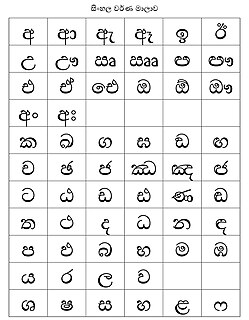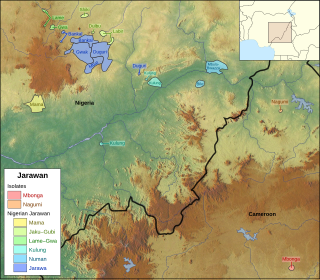Related Research Articles

The Berber languages, also known as the Amazigh languages, are a branch of the Afroasiatic language family. They comprise a group of closely related languages spoken by the Berbers, who are indigenous to North Africa. The languages were traditionally written with the ancient Libyco-Berber script, which now exists in the form of Tifinagh.

Quechua, usually called Runasimi in Quechuan languages, is an indigenous language family spoken by the Quechua peoples, primarily living in the Peruvian Andes. Derived from a common ancestral language, it is the most widely spoken pre-Columbian language family of the Americas, with an estimated 8–10 million speakers as of 2004. Approximately 25% of Peruvians speak a Quechuan language. It is perhaps most widely known for being the main language family of the Inca Empire. The Spaniards encouraged its use until the Peruvian struggle for independence of the 1780s. As a result, Quechua variants are still widely spoken today, being the co-official language of many regions and the second most spoken language family in Peru.

Spanish is a Romance language of the Indo-European language family that evolved from colloquial spoken Latin in the Iberian Peninsula. Today, it is a global language with nearly 500 million native speakers, mainly in the Americas and Spain. It is the world's second-most spoken native language after Mandarin Chinese, and the world's fourth-most spoken language overall after English, Mandarin Chinese, and Hindi, as well as the world's most widely spoken Romance language.

The Mongolic languages are a language family spoken by the Mongolic peoples in Eastern Europe, Central Asia, North Asia and East Asia, mostly in Mongolia and surrounding areas and in Kalmykia and Buryatia. The best-known member of this language family, Mongolian, is the primary language of most of the residents of Mongolia and the Mongol residents of Inner Mongolia, with an estimated 5.7+ million speakers.

Sinhala, is an Indo-Aryan language primarily spoken by the Sinhalese people of Sri Lanka, who make up the largest ethnic group on the island, numbering about 16 million. Sinhala is also spoken as the first language by other ethnic groups in Sri Lanka, totaling about 4 million people as of 2001. It is written using the Sinhala script, which is one of the Brahmic scripts; a descendant of the ancient Indian Brahmi script closely related to the Kadamba script.

Venda or Tshivenda is a Bantu language and an official language of South Africa. It is mainly spoken by the Venda people in the northern part of South Africa's Limpopo province, as well as by some Lemba people in Zimbabwe. The Venda language is related to Kalanga, which is spoken in Zimbabwe and Botswana. During the apartheid era of South Africa, the bantustan of Venda was set up to cover the Venda speakers of South Africa.
A minority language is a language spoken by a minority of the population of a territory. Such people are termed linguistic minorities or language minorities. With a total number of 196 sovereign states recognized internationally and an estimated number of roughly 5,000 to 7,000 languages spoken worldwide, the vast majority of languages are minority languages in every country in which they are spoken. Some minority languages are simultaneously also official languages, such as Irish in Ireland or the numerous indigenous languages of Bolivia. Likewise, some national languages are often considered minority languages, insofar as they are the national language of a stateless nation.
The Agaw or Central Cushitic languages are Afro-Asiatic languages spoken by several groups in Ethiopia and, in one case, Eritrea. They form the main substratum influence on Amharic and other Ethiopian Semitic languages.
Ndyuka, also called Aukan, Okanisi, Ndyuka tongo, Aukaans, Businenge Tongo, Eastern Maroon Creole, or Nenge is a creole language of Suriname and French Guiana, spoken by the Ndyuka people. The speakers are one of six Maroon peoples in the Republic of Suriname and one of the Maroon peoples in French Guiana. Most of the 25 to 30 thousand speakers live in the interior of the country, which is a part of the country covered with tropical rainforests. Ethnologue lists two related languages under the name Ndyuka, the other being a dialect of Lutos.

Carrasco is a province in the Cochabamba Department in central Bolivia. Its capital is Totora.
Finnish Kalo is a language of the Romani language family spoken by Finnish Kale. The language is related to but not mutually intelligible with Scandoromani or Angloromani.
The East Bodish languages are a small group of non-Tibetic Bodish languages spoken in eastern Bhutan and adjacent areas of Tibet and India. They include:
Kanam is a Local Government Area in Plateau State, Nigeria. Its headquarters are in the town of Dengi.

Jarawan is a group of languages spoken mostly in Bauchi State, Nigeria, with some also scattered in Taraba State and Adamawa State in the same country. Two related languages formerly spoken in Cameroon are now extinct but are believed to have belonged to the group. This connection between Nigerian and Cameroonian Jarawan is attributed to Thomas (1925). Whether Jarawan languages are best classified alongside other Bantu languages or among non-Bantu Bantoid languages is a matter of ongoing debate. A number of descriptions and classifications in the early 20th century suggest that they be may historically related to Bantu languages but not necessarily Bantu themselves. Other perspectives based on lexicostatistic modeling and other phylogenetic techniques for language comparison argue instead that Jarawan languages are properly classified alongside Zone A Bantu languages (A31-A40-A60). For classifications based on these more recent studies, see for example Blench (2006), Piron (1997), and Grollemund (2012).
Jarawa is the most populous of the Bantu languages of eastern Nigeria. It is a dialect cluster consisting of many varieties.

ʼOle, also called ʼOlekha or Black Mountain Monpa, is a Sino-Tibetan language spoken by about 1,000 people in the Black Mountains of Wangdue Phodrang and Trongsa Districts in western Bhutan. The term ʼOle refers to a clan of speakers.
Toro, also known as Turkwam, is a Plateau language of Nigeria. It has lost the nominal affix system characteristic of the Niger–Congo family.

The Sama language, Sinama, is the language of Sama-Bajau people of the Sulu Archipelago, Philippines; Sabah, Malaysia and parts of Indonesia. The Sama are one of the most widely dispersed peoples in Southeast Asia.
Drag Race Thailand is a Thai reality competition show based on the American version with RuPaul. The series was licensed by the Kantana Group and premiered on 15 February 2018. The show is hosted by fashion stylist Art Arya, while drag performer Pangina Heals co-hosts.
References
- 1 2 http://www-01.sil.org/iso639-3/cr_files/2011-171_jkt.pdf [ dead link ]
- ↑ Mama at Ethnologue (18th ed., 2015) (subscription required)